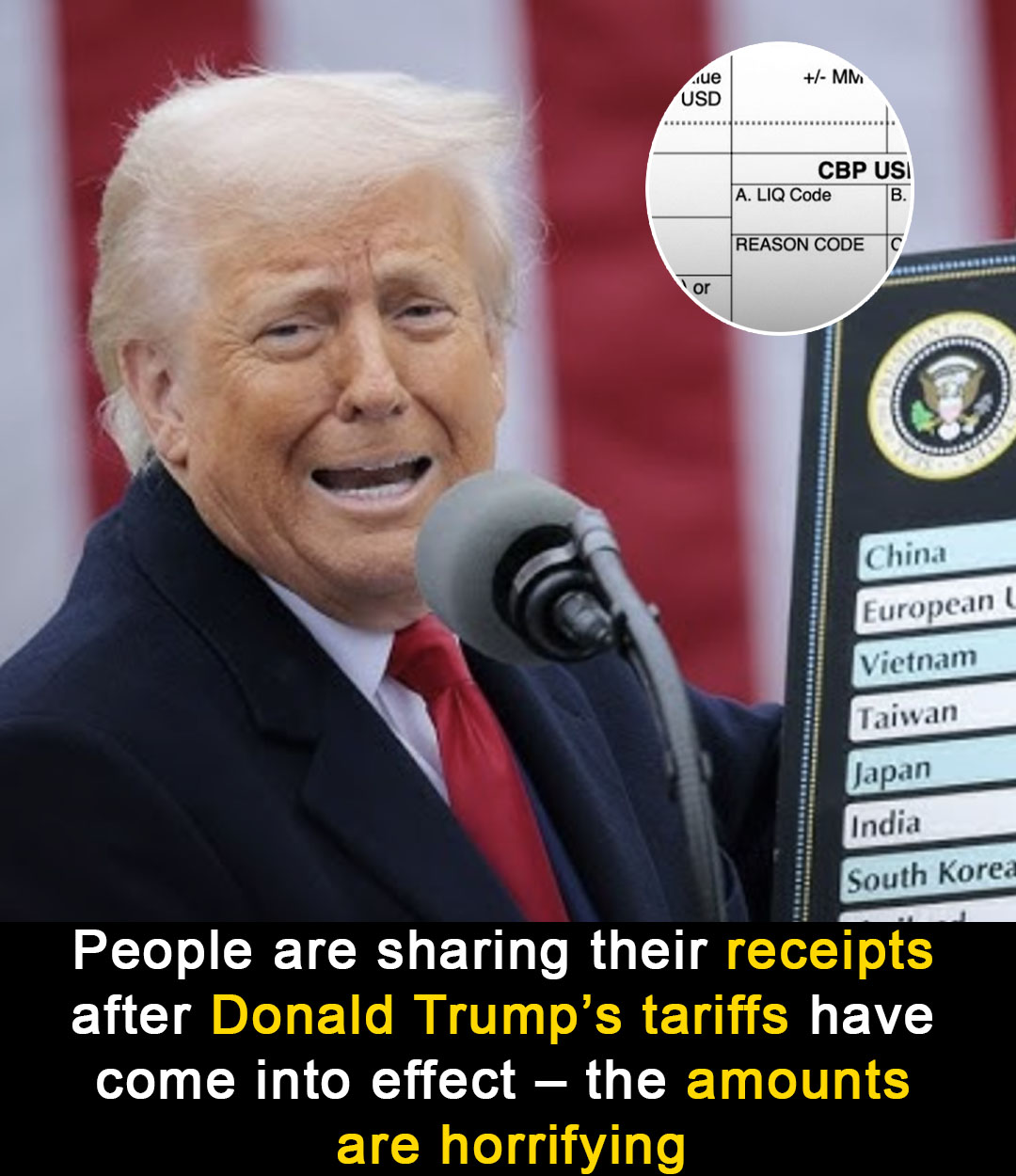When new tariffs take effect, the financial impact doesn’t just affect major corporations—it hits everyday consumers. Now, across social media, customers and businesses alike are starting to claim visibility, posting receipts and invoices to reveal just how deep the tariffs are cutting into their budgets.
In May 2025, following a renewed wave of global tariff regulations introduced by President Donald Trump, the economic aftershocks are being felt across the country. From household goods to imported tech, prices are climbing, and people are not staying silent. They’re going public with their frustrations—and their receipts.
What the Tariffs Really Mean for You
Earlier this year, President Trump introduced a fresh list of tariffs targeting international trade—including improbable regions like Heard Island and McDonald Island, which are known more for seals and penguins than products. But the reality is much closer to home. Americans are now facing unexpected price hikes at stores, especially on electronics and imported goods.
Retail giants like Walmart were quick to respond. CEO Doug McMillon acknowledged the pinch, stating, “We will do our best to keep prices low. But even with reduced tariffs, the pressure is real, and retail margins are tight.”
When companies with vast logistics and financial capabilities start speaking out, the average family with mortgage payments, student loans, or a limited credit line may have reason to worry. Budgeting now requires not just savvy shopping—but strategic survival.
Tech Brands Reveal the True Cost Behind Imports
It’s not just mega-retailers feeling the heat. Small to mid-sized tech companies are taking a major hit—and they’re pulling back the curtain.
Wyze Cam, a budget-friendly smart device manufacturer, revealed that it paid $255,000 in tariffs and over $579 in fees to import just $167,000 worth of inventory. That’s a 152% markup before a single sale.
GlytchTech, another U.S.-based tech company, shared a DHL invoice showing more than $2,800 in tariffs for products valued under $2,000. These numbers don’t just show up in boardrooms—they affect consumer pricing directly.
Similarly, Adafruit Industries, known for their DIY electronics kits, shared a breakdown of a massive 125%+20%+25% import tariff on a single shipment. In their company blog, they candidly stated:
“Tariffs are due before we sell any products, not after. That destroys cash flow. Unlike other taxes such as income or sales tax, this hits us before we can recover.”
“And unfortunately, we can’t always manufacture or source alternatives because of IP protections from our original vendors. This isn’t just business—this is survival.”
👉 Full Story: Man Loses 360 Pounds Naturally – Internet Rallies to Support His Next Step
.
Why Consumers Are Sharing Receipts
As more people start seeing unusual markups and longer delivery times, the frustration is boiling over. But something interesting is happening too—consumers are becoming educators.
By posting receipts online, they’re holding retailers and policymakers accountable. People are learning to read invoices, question shipping fees, and even file claims when they suspect overcharging.
This new wave of transparency empowers consumers. And in a digital world where hosting, software, and smart devices are essential to both work and daily life, knowledge is power.
For small business owners and entrepreneurs trying to grow without the support of major capital or government-backed loans, these added costs can crush expansion. Whether you’re trying to invest in a degree, rent office space, or set up your next video conference, imported equipment often forms the backbone of modern business.
Claiming Back Control Over Your Money
What options do consumers and small companies really have? Some are trying to reclassify their imports, a tedious process that may take months to resolve—and still doesn’t guarantee a refund. Others are outsourcing production, shifting to countries not impacted by the new tariff list, or turning to attorneys for legal interpretation of trade codes.
But all of these options require upfront money, legal resources, and lots of time. For the average American juggling credit card bills, rising gas/electricity prices, or simply trying to put food on the table, those aren’t luxuries they can afford.
That’s why more are starting to document and share. It may not fix the system overnight, but visibility fuels pressure, and pressure fuels change.
👉 Also Read: Tammy Hembrow’s Bikini Photos Are Stirring Controversy – Here’s Why Everyone’s Talking
The Takeaway: Watch Your Receipts, Know Your Rights
Tariffs might seem like a government-level issue, but the impact is as personal as your next grocery bill. From hidden transfer costs to steep import markups, it’s the public—families, students, gig workers—who pay first.
As businesses sound the alarm, consumers should pay attention. Track your purchases. Save your invoices. Don’t hesitate to claim unfair charges or question unexpected price surges.
In a time where transparency is power, your voice—and your receipt—might be the most valuable tools you have.



